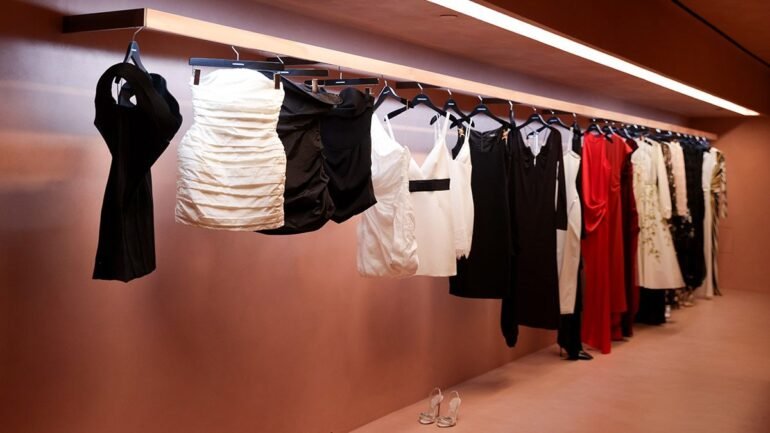Become a Vogue Business Member to receive unlimited access to Member-only reporting and insights, our Beauty and TikTok Trend Trackers, Member-only newsletters and exclusive event invitations.
Luisaviaroma has become the latest multi-brand luxury fashion retailer to teeter on the brink of collapse. The Florence-based company has filed for court protection under Italian insolvency law, seeking a temporary shield from creditors while it attempts to implement a strategic turnaround. Management blamed macro headwinds — including the luxury slowdown, US tariffs and increasing transport costs — as well as missteps in its own strategy.
Under Italian insolvency law, the typical length of court protection is 120 days, with the option to extend to 240 days depending on restructuring negotiations. In this time period, creditors can still file claims and participate in proceedings (for instance, they may be threatening legal action over unpaid invoices), but the company has some breathing space for rescue efforts.
“This is a challenging moment, but also the starting point for a new strategy. Luxury and online fashion are facing a structural crisis and we, both retailers and brands, have made mistakes that we must now acknowledge,” CEO Tommaso Maria Andorlini said in a statement emailed to Vogue Business, citing price and value positioning, excessive product homogenisation and a shift in spend to experiences.
Just a few years ago, Luisaviaroma — one of the pioneers in luxury multi-brand e-commerce — was expanding aggressively. In 2021, it secured €130 million from private equity firm Style Capital and expressed its ambition to go public, and scale its international footprint. Andorlini, an Italian retail entrepreneur, was appointed in 2023 to drive its expansion. Luisaviaroma opened its first international store in New York in 2024, as well as a headquarters in Milan.
However, last month the company closed its Milan HQ, with plans to relocate 22 employees to Florence. At the time, Andorlini told WWD that the decision was part of its restructuring plans, but denied any intentions to enter court protection amid negotiations with creditors.
Luisaviaroma’s fall from global growth to survival mode is reflective of the headwinds facing luxury multi-brand retail today. After an immediate post-pandemic boom, the sector has faced challenges in the past few years, with the closure of Matches, Farfetch’s rescue from bankruptcy and Net-a-Porter’s bumpy path from Richemont to Mytheresa, alongside the consolidation of American department stores. Multi-brand e-commerce, in particular, has been weighed down by high-cost inventory and logistics to changes in consumer behaviour and geopolitical uncertainties.
Luisaviaroma stocks hundreds of luxury brands including Dolce & Gabbana, Balenciaga and Saint Laurent. The foundation of its turnaround will be careful selection of partners that create mutual value, and open and honest dialogue with brands, said Andorlini, along with realigning pricing and focusing on “trendsetting markets” such as Europe and the US. He added that it would move away from a definition of luxury that is “outdated” and “no longer universally admired”. “Our goal is to serve the high-end consumer who is conscious, discerning and attentive to the origin of products, their story, and their true medium to long-term value,” Andorlini said.
He concluded: “Debt restructuring is the tool that will allow us to shed past constraints and return to what Luisaviaroma has always done best: being a platform for discovery, inspiration and passion for fashion. Change is challenging, but necessary. And today, more than ever, we have the responsibility to lead it.”
Comments, questions or feedback? Email us at feedback@voguebusiness.com.
More from this author:
How Liberty London is outpacing retail’s slowdown
